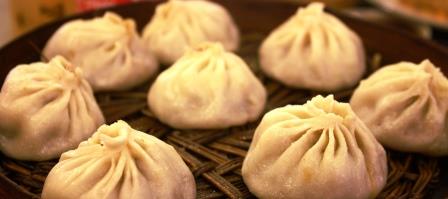
“If you do not change direction, you may end up where you are heading.”
Lao Tzu
After queuing out on the sidewalk for an age, patiently day-dreaming about the magic going on inside, you enter a large, unremarkable room, the simplest of furnishing, functional only, no time for the fashionable or chic here. Perhaps a nod to good feng shui and the smiling statues of Fu Lu and Shou will be peering at you from a discreet, yet carefully chosen location; it is your good fortune to have come here, it is their good fortune that you came.
A crush of people, a cacophony of chatter and the cling, clang noises of busy eating. Shouts, squeals, slurps and burps: old ladies in hair nets and grubby aprons, wheeling about trolleys that are piled high with bamboo steamers; quickly and deftly they stack them on tables, ticking boxes on little red lettered chits, then moving on, ever moving. Stay ever alert for it is better to weave out of the way, lest you incur the wrath of their personal version of road rage.
Finally seated, you survey a table landscape of little white, porcelain bowls, with deep blue patterns, things of beauty, chipped and marked by the history of a thousand meals. A table with a large, rotating ‘Lazy Susan’, piles of worn plastic chopsticks, little china cups, constantly refilled with oolong or chrysanthemum tea, there to wash down all those delicious little mouthfuls of steamy, greasy, juicy goodness.
You have entered a culinary Shangri La, somewhere amidst the seven levels of heaven, where friends, family and loved ones all come together and graze on delicacies as beautiful as they are delicious, morsels of magnificence, mouthfuls of the marvelous. This is special, it is noisy, it is fun and it is food. This is life lived large, loud and lovingly and it might just be something close to perfect harmony.
A Chinese family is a remarkable thing, it is all whom are here in the present and all that have gone before and all that are yet to arrive and it spans beyond time and space and is something eternal: watching a room full of Chinese families gathered together noisily and lovingly, enjoying Yum Cha in Hong Kong is transcendental, wonderful, it is the joy of life and a thing of rare beauty.
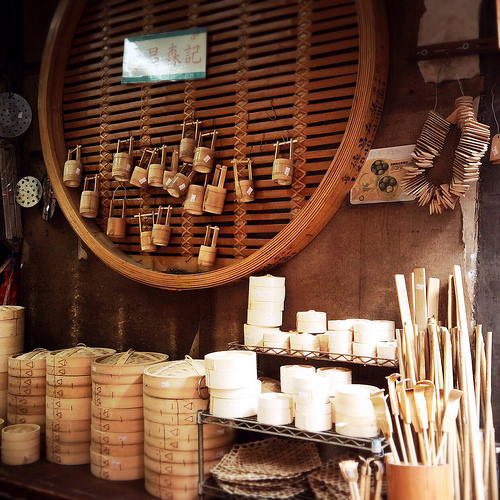
‘Everything has beauty, but not everyone sees it.’
Confucius
Yum Cha
Yum Cha, (drinking tea) also known as Bang Min, (tasting tea) is a traditional southern China morning or afternoon event, it involves the drinking of tea accompanied by small parcels of food known collectively as Dim Sum.
The tradition is believed to have started along the Silk Road where weary travelers would stop at roadside tea houses. Once people worked out that drinking tea aided digested, teahouses started offering small morsels of food to accompany the tea.
Dim Sum
Is a selection of small parcels of food specifically prepared to be served with tea during Yum Cha. The highly specialized and crafted cuisine has its origins in Southern China, specifically amongst the Cantonese. Dim Sum master chefs are revered in much of China and it is said to take decades to truly master the art of making the very finest dumplings.

‘Supreme excellence consists in breaking the enemy’s resistance without fighting.’
Sun Tzu
Dumplings
Zhang Zhongjing, a legendary Chinese physician of the Han Dynasty, is often attributed with founding the very first Chinese Dumplings.
Much of the art of creating Dim Sum centers around the making of superbly balanced and crafted dumplings filled with meats like pork and shrimp or with vegetables. Dumplings are often steamed but can be fried or served in a soup. The most common form of dumpling in Dim Sum is known as Gao, which has a thin skin and is a smaller portion than most other types of dumpling.
Gao
Often made with Ly water, wheat starch and rice flour, these dumplings are typically thin, fine and silky, they are smaller than other dumplings and often beautifully crafted, decorative and very complex in their flavours.
Other Dim Sum dumplings such as Har Gow are made from a combination of wheat and tapioca starches that give it its semi translucent, almost shiny appearance.
Consistently perfect rice-flower dumpling skins are considered difficult to make and the even, translucent dumpling skins of gao are considered a high form of culinary artistry and achievement.
Jiaozi
A more ubiquitous dumpling across China and made in a wide variety of styles and fillings. Jiaozi may be boiled, steamed or fried. Families will often come together to make them at home and each family will have their own ‘secret’ recipe and favourite Jiaozi.
Restaurants will often prepare Jiaozi for breakfast and then leave them on steamers to be enjoyed throughout the day.
Jiaozi are eaten all year round but are more eagerly devoured during Chinese New Year. They look like the golden ingots, (yuan bao) used during the Ming Dynasty for money and the name sounds like the word for the earliest paper currency. Serving Jiaozi is believed to bring prosperity and many families eat them at midnight on Chinese New Year’s Eve.
Guotie
In Cantonese these dumplings are called Wor Tip, in much of the west they are known as ‘Pot Stickers’ and as Yaki-Gyoza in Japan.
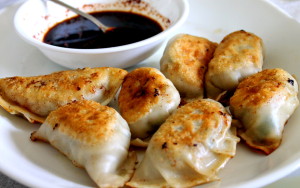
Guoti is simply Jiaozi shallow fried in a pan or wok and is a very common street food across China. Often filled with shrimp, pork, scallions and ginger, it is not classically considered Dim Sum although, today, it will often be offered as part of a Yum Cha.
Guotie is said to date back over four millennia. However, the first mention in literature dates back to the Song Dynasty (960–1280 AD) in ancient China reporting guotie as being exceptionally good for the human soul.
Won Ton
This is a dumpling wrapper made with flour, egg, water and salt and is often deep fried but may also be steamed or boiled. It is popular in soups and often filled with ground pork.
Won Ton is most popular in Cantonese, Sichuan, Shanghai and Ningbo cuisines in China.
Baozi
This is a white, fluffy Chinese bun that can come with a variety of fillings from char siu pork to semi sweet bean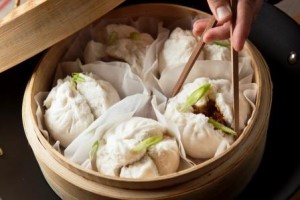 paste. This is a very famous and celebrated dish and each city and town will often have its own special style and filling.
paste. This is a very famous and celebrated dish and each city and town will often have its own special style and filling.
Tang Bao
These are soup Baozi, various varieties are found across China and they are made by wrapping a gelatinous filling in dough. When steamed the filling melts to become a delicious soup locked inside the bun.
Xiaolongbao
Only true Dim Sum masters are said to have the skill to properly prepare the legendary Xiaolongbao, which is a steamed baozi from Jiangnan in China.
Xiaolongbao are often referred to as a kind of “dumpling”, but should not be confused with Chinese jiaozi. Similarly, they are considered a kind of “soup dumpling” but should not be confused with other larger varieties of tang bao.
Xiaolongbao originated in Nanxiang, a suburb of Shanghai in the Jiading District. The inventor of xiaolongbao sold them in his first store in Nanxiang next to the town’s notable park, Guyi Garden. From there the xiaolongbao expanded into downtown Shanghai and outward.
Two specialist xiaolongbao restaurants have a particularly long history. One is Nanxiang Mantou Dian (Nanxiang Bun Shop), which started around 1900 and derives from the original store in Nanxiang. The other is Gulong Restaurant, at the original site next to Guyi Garden in Nanxiang.
Once Xiaolongbao spread to Taiwan they began to find international fame and the Chinese delicacy soon spread out across the globe.
As you may have already imagined, xiaolongbao can be tricky to eat, novices run the risk of scolding the roof of their mouth or burning their throat. The best way to eat Xiaolongbao is to pick it up from the top with your chop sticks, then place it in your spoon, prick the skin till it is breached and allow the dumpling to sit for a half a minute or so to let the steam and some of the heat out. Then pop the entire creation in your mouth and enjoy.
Eating xiaolongbao, with its silky fine texture and its filling of pork and soup is an amazing gastronomic experience; many consider xiaolongbao to be the finest culinary expression and art-form of the dumpling or tang bao.
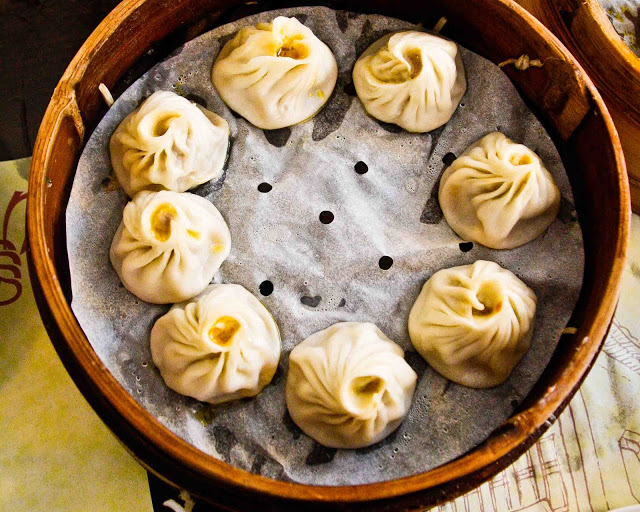
Sauces
Dipping sauces for Dim Sum will traditionally include red wine vinegar, soy and chili sauces.
Non-classical sauces involved may include plum sauce, hoi sin sauce, oyster sauce or sweet and sour sauce, a hot mustard sauce or even a Szechuan salt and pepper mix.
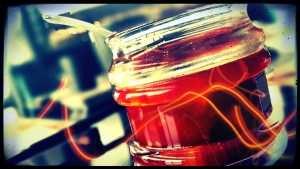
Teas
The tasting of tea is an integral part of eating Dim Sum. Settling on which tea to drink is often the first and most important decision of the meal. The tea aides digestion and is favoured for its other health and medicinal properties.
Chrysanthemum tea – Chrysanthemum tea does not actually have any tea leaves. This is a flower-based tisane made from chrysanthemum which has a delightful perfume and is light and easy to drink.
Green tea – Because this tea does not undergo any fermentation it retains its green colour and more importantly, it retains its polyphenols and chlorophyll which are renowned for the medicinal, anti-ageing, anti-oxidizing and detoxification properties.
Oolong tea – My favourite, Yum Cha tea. The tea leaves are partially fermented, imparting the characteristics of both green and black teas. Its taste is similar to green tea but has less “grassy” flavor. I love the flavours and the digestive powers of oolong tea and find I can drink all Yum Cha long.
Pu-erh tea – This is a legendary tea in China, usually served in small clay teapots made from Pu-erh clay and seasoned with the tea for many years until they reach perfection. The tea has undergone years of fermentation, giving it a unique, earthy flavor. A favourite of Chinese tea collectors and investors, the variety is usually compressed into different shapes like bricks, discs, bowls or bells and kept for many, many years. Some ‘vintage’ teas are sold on the market at well over one hundred years old, fetching very high prices, much like old wines are auctioned in the west.
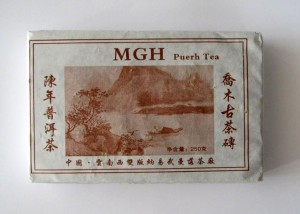
The Two Fingered Tea Tap
It is customary to pour tea for others before filling one’s own tea cup. It is most gracious to be the first to pour tea.
When tea drinkers tap the table with two fingers, it is an action known as the ‘finger kowtow’ and it means thank you.
According to legend this gesture comes from a tale that can be traced back to Emperor Qianlong, a Qing Chinese emperor. While secretly visiting South China he once went into a teahouse with his companions. In order to maintain his anonymity, he took his turn at pouring tea. His stunned companions wanted to kowtow for the great honour but to do so would have revealed the identity of the emperor. Finally, one of them tapped three fingers on the table (one finger representing their bowed head and the other two representing their prostrate arms) and the clever emperor understood what he meant. From then on, this has been the practice, a practice I have witnessed myself many times at Yum Cha in China.
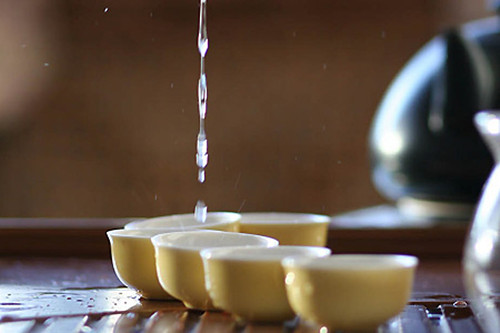
When the way comes to an end, then change. Having changed, you pass through.
I Ching – The Book of Change
Tim Ho Wan
Mak Kwai Pui was head dim sum chef at the Four Seasons Hotel’s Lung King Heen restaurant in Hong Kong,
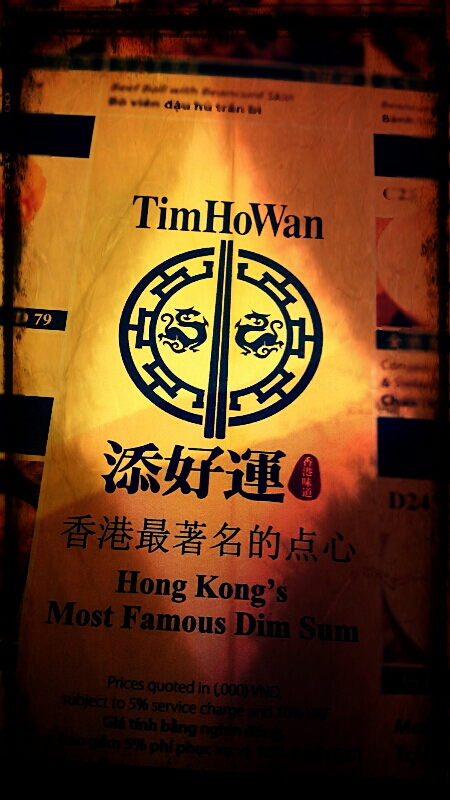 helping it earn three Michelin Stars.
helping it earn three Michelin Stars.
In 2009 he opened his own small, hole in the wall Dim Sum restaurant in Mongkok, looking to make top quality dim sum at affordable prices for Hong Kong’s diners; he succeeded spectacularly.
In 2010, the little Tim Ho Wan, dim sum eatery stunned the culinary world and collected a Michelin Star, instantly making it not only the most famous little dim sum eatery in the world but, now one with staggeringly long queues and marathon waits to get a table.
The restaurant gained international press, usually pointing out that it was also the most inexpensive Michelin starred restaurant in the world and soon people were flying in to Hong Kong from all over the planet to join the ever growing queue, the legend was well and truly born.
Still they came, the simple menu of dim sum classics, inexpensive but executed to perfection were irresistible and soon Mak opened another, and another and another, he’s still opening them now and demand sees no end in sight.
Today there are Tim Ho Wan restaurants spread out across cities all over Asia and South East Asia; in 2015 Sydney Australia is due to get no less than three. In 2014 Tim Ho Wan opened in Lotte Tower, Hanoi and quickly became one of my favourite restaurants in this city.
Pui-Gor -as chef Mak Kwai Pui is sometimes known- has instilled important standards, insisting that all outlets only use the freshest ingredients and that the Dim Sum must be prepared in the traditional ways and it must be made fresh every day, never stored and never frozen.
There are some almost fast food like elements to Tim Ho Wan, place mat menus, a small selection and there are some classic Dim Sum characters that remain, plenty of good tea, no reservations, lots of noise and fun going on and those incredibly reasonable prices.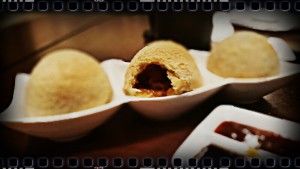
The four signature dishes on the menu are known as the Big Four Heavenly Kings as Chef Mak calls them.
There is a Char Siu Pork Boa that is now so famous it should have its own publicist, a coke habit and its own reality show on television, oh and it’s that damned good. A crisp, almost sweet steaming bun filled with a rich, oozing, sweet and salty pork, it is just outrageously, gob-smackingly delicious.
Other personal favourites include Shao Mei, Har Gow, Turnip Cake, Vermicelli Rolls and Meat Balls in Bean Curd skins.
Tim Ho Wan in Lotte Tower has the added bonus of hovering in a glass tower 36 floors above the city, views are stunning, service is friendly and very good for such a busy place and the always packed venue suggests that Hanoians, like the rest of the region can’t get enough of this quirky, quality, affordable dim sum.
There is a touch of the McDonalds-meets-Mongkok about Tim Ho Wan in foreign markets, I guess expanding global empires need to be slick machines, however, the view, the staff, the décor, the tea and the quality of the dim sum soon remove all my cynicism. Hovering above Hanoi I am indeed in culinary heaven.

